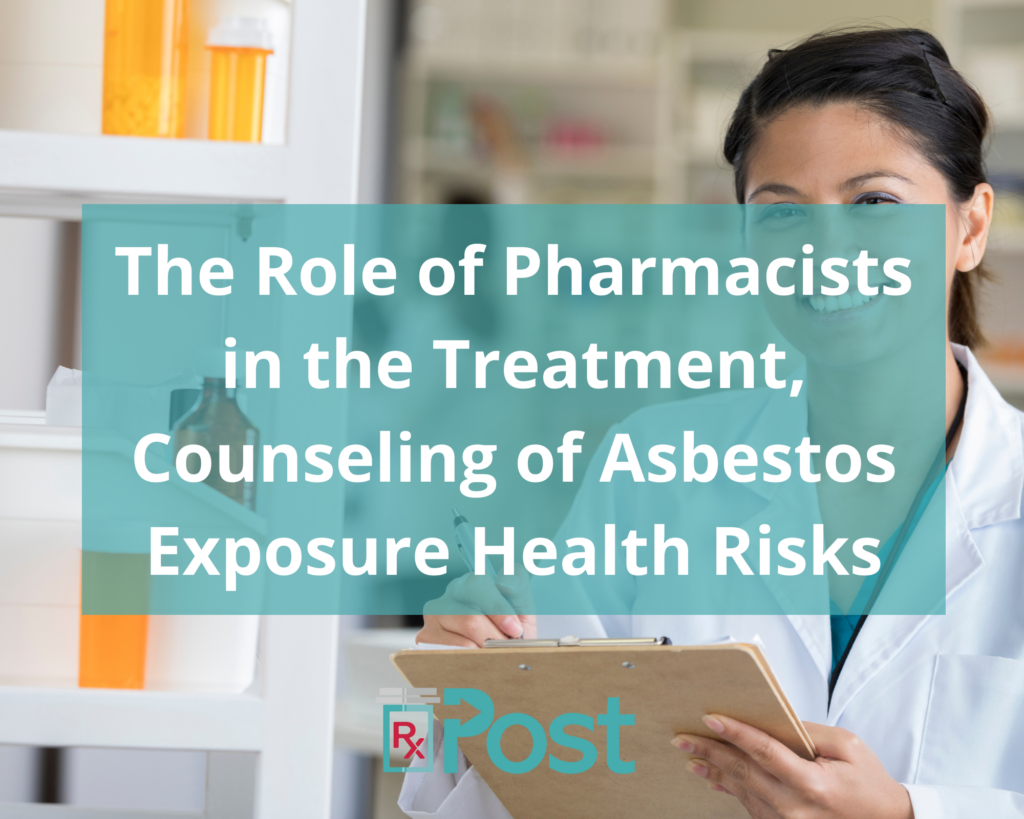Cancer-screening measures performed in a pharmacy can offer opportunities to educate patients about the health risks of asbestos exposure.
Studies showed that asbestos exposure causes an estimated 255,000 deaths annually. Among these numbers, about 233,000 deaths involved work-related exposures. Because of the high occurrence of asbestos exposure still present today, affected individuals may require counseling and treatment to help them manage their condition and symptoms. In this case, pharmacists can play a role in helping these individuals.
For example, asbestos exposure can lead to various health risks like mesothelioma, a rare form of cancer affecting the lung and abdomen tissues. The Mesothelioma Group website offers helpful information about mesothelioma stages, prevention, and treatment options to manage the disease’s symptoms.
Treatment for such diseases and their symptoms often involves multidisciplinary methods, including surgery to remove cancerous tissue. But the mainstay treatments for cancer are usually drug-related, placing the oncology pharmacist in a pivotal role in supporting the patient during their treatment.
In the care of patients with cancer following asbestos exposure, oncology pharmacists are involved in their assessment, diagnosis, treatment, symptom management, and medication management. The pharmacists’ field of expertise allows them to be an intermediary between patients and doctors by helping patients understand the details of drug therapy and its mechanisms of action.
For this reason, providing training to pharmacists can also be beneficial to help them gain advanced capabilities in assisting patients in managing the asbestos-related disease. Also, advancements in therapies, including positive outcomes in immunotherapy, require pharmacists to bridge the skill gap to best qualify a medication based on the patient’s specific condition.
Aside from these advancements, the pharmacist’s scope has significantly changed, shifting toward patient care and away from dispensing activities. This situation puts pharmacists in a prime position to integrate cancer-screening initiatives into their practice. Regulating pharmacy technicians can also strengthen the feasibility of community pharmacists by becoming more involved in cancer-screening efforts.
Patients seeking advice from pharmacists about cancer signs and symptoms often visit pharmacies for health information. One study mentioned that around 1% to 25% of patients who sought advice from pharmacists were looking for treatment guidance for their cancer symptoms.
As the most accessible healthcare professionals, pharmacists can educate patients on strategies that can help lower the risk of asbestos exposure and the incidence of specific cancers. For this reason, cancer-screening measures performed in a pharmacy offer opportunities to educate patients about asbestos exposure.
One systematic literature review analyzing the pharmacist’s role in providing early cancer detection mentioned that there’s a significant potential for community pharmacies to deliver cancer education and screening interventions. The findings suggest that screening in community pharmacies can help identify those likely exposed to asbestos or individuals at higher risk of developing cancer. Health screening in community pharmacies can be an effective tool to improve participation in screening programs.
Health Risks of Asbestos Exposure
Asbestos can be present in the air, water, and soil, often at low levels, so anyone can get exposed to asbestos at any time during their life. However, most people don’t immediately get ill from such low-level exposure. Instead, those who become sick are the ones exposed to asbestos frequently. These high-risk individuals often work directly with the material.
Breathing asbestos can cause tiny asbestos fibers to get stuck in the lungs and irritate lung tissues, potentially leading to the following diseases:
- Asbestosis: This is scarring in the lungs due to inhaling asbestos fibers. When the lungs are scarred, oxygen and carbon dioxide can’t pass easily through these organs, making breathing difficult. Asbestosis often occurs in people exposed to high amounts of asbestos for a long time. Symptoms usually appear after many years.
- Pleural disease: This is a non-cancerous lung condition leading to changes in the pleura (tissue around the chest cavity and lungs). This disease can cause the membrane to become thick in isolated areas (pleural plaques) or throughout (diffuse pleural thickening); fluid can also build up around the lungs (pleural effusion). Although not everyone with pleural disease will have breathing difficulties, some can have reduced lung function efficiency.
- Lung cancer: Lung cancer is a malignant tumor that attacks and clogs the lungs’ air passages. Asbestos exposure and tobacco smoking both significantly increase the likelihood of developing lung cancer.
- Mesothelioma: A rare cancer of the pleura, it can also affect the tissue lining, the abdominal cavity (peritoneum), or other internal organs. Mesothelioma symptoms may not manifest until 30 to 40 years after asbestos exposure.
Aside from lung cancer and mesothelioma, asbestos exposure can also lead to cancer of the ovary and larynx. The CDC explains that asbestos exposure could also lead to the pharynx (throat), colorectum (colon and rectum), and stomach cancer as well.
Article originally from Pharmacy Times here.


